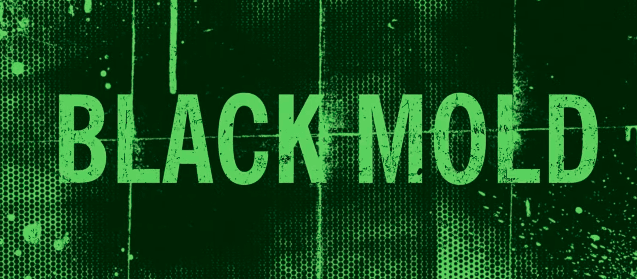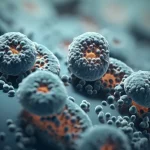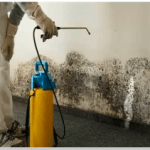
TYPES OF BLACK MOLD
- Stachybotrys chart arum
- Stachybotrys atra
- Aspergillus Niger
- Cladosporium herbarum
- Alternaria alternata
- Ulocladium chartarum
- Chaetomium globosum
1. Stachybotrys Chartarum
This is the most well-known and hazardous type of mold, also called poisonous black mold. When there is a lot of moisture, it grows best on things like drywall, insulation, and wood that have a lot of cellulose in them. It looks dark greenish-black and feels slimy. Stachybotrys makes mycotoxins, which can cause major health problems such as recurrent coughing, nosebleeds, skin irritation, and neurological difficulties, especially in babies and those with weak immune systems.
2. Stachybotrys atra
This is just another name or an older way to classify Stachybotrys chartarum, although you can still find it in some older books and publications. It has the same traits: it looks dark and slimy, grows on damp surfaces with a lot of cellulose, and makes mycotoxins that are harmful for you.
3. Aspergillus niger
This type of black mold is ubiquitous both inside and outside. It can be black or very dark brown and often grows on food, wet walls, and dead plants. Aspergillus niger isn’t as poisonous as Stachybotrys, but it can still induce allergic reactions and respiratory infections. It is especially dangerous for individuals with asthma or weak immune systems. It could possibly make mycotoxins, depending on the conditions in the environment.
4. Cladosporium herbarum
Cladosporium herbarum is a common mold that can be black, olive green, or brown. It can be found on damp wood, fabrics, HVAC vents, and walls. It doesn’t normally make mycotoxins, but it can cause allergic reactions and respiratory problems like sneezing, stuffy nose, and itchy eyes.
5. Alternaria alternata
This mold is black or dark green and has a woolly or hairy texture. It likes to develop in wet places like under sinks, in showers, or behind windows that leak. It spreads swiftly and is known to cause serious allergic reactions, asthma episodes, and problems with the upper respiratory system. Samples of indoor air can identify it as one of the most prevalent types of mold.
6. Ulocladium chartarum
Ulocladium appears as a black mold that thrives in areas with significant water damage, such as bathrooms, kitchens, and basements. It doesn’t make hazardous mycotoxins like Stachybotrys, but it can still cause allergic reactions and may thrive with more poisonous mold species.
7. Chaetomium globosum
Water-damaged homes often harbor this mold, particularly under wallpaper, in drywall, or on baseboards. It starts out white and gets darker over time. Chaetomium can smell musty and has been related to skin and nail infections and breathing problems in people who are sensitive to it. It loves damp cellulose materials, just like Stachybotrys.
FREQUENTLY ASKED QUESTIONS REGARDING BLACK MOLD
Q.1 What kind of black mold is toxic?

Stachybotrys chartarum is one of the toxic mold. Its also green in color. It is the highly toxic mold that grows or produce mycotoxins as airborne mold spores.
Q.2 Is it safe to stay in a house with black mold?

No, it’s not safe to stay in the house or working area where there is a black mold. Because it can cause serious health risks.
Q.3 Is black mold cancerous?

No, Black mold is not Cancerous according to the resources available through Internet pr research work.
Q.4 How to get rid of Black Mold?

Fix the moisture source, clean the area using a mold-killing solution and ensure area is completely dried . For large or toxic infestations, hire a certified mold removal professional.
Q.5 What are the symptoms of Black Mold?

The main symptoms include nasal congestion, runny nose, sneezing, coughing, sore throat, and itchy, watery eyes. In some cases person can feel chest tightness and shortness of breath.
